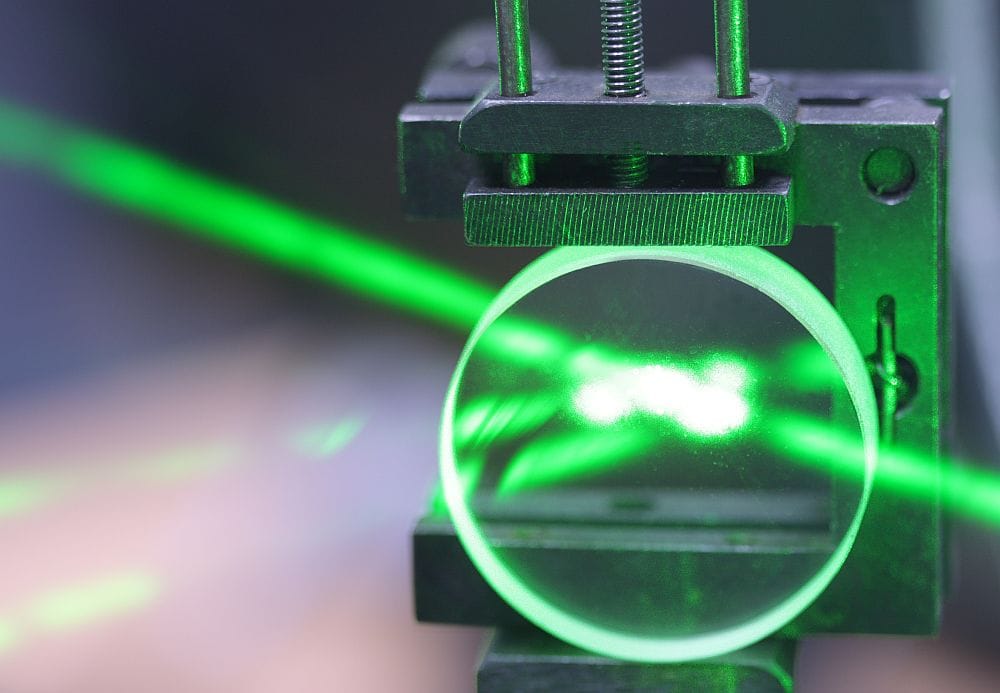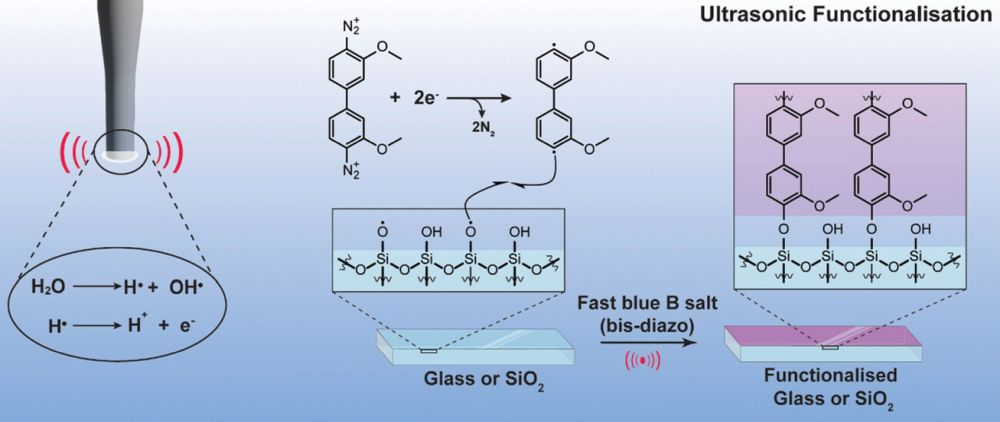
[Image above] University of Chicago graduate student Xingyu Shen holds a device that uses quantum dots to produce mid-infrared light. Credit: Jean Lachat, University of Chicago
In the more than five years since self-driving cars started hitting public roads, vehicle manufacturers have been largely unsuccessful in changing people’s opinions about the futuristic technology. In fact, according to a recent poll by AAA, trust in these cars is at an all-time low compared to previous years.
There is one group of people, though, who do largely view this technology as attractive—farmers.
As explained in a WOSU Public Media article, autonomous machinery such as drones that spray pesticides and robots that milk cows have been a boon to farmers who struggle to find workers amid the farm labor shortage. And unlike automation in other fields, which sometimes comes with the threat of job loss, many in the agricultural field see these machines as an opportunity for growth for small-scale farmers.
Self-driving tractors are considered by some to be the next big step in agriculture automation, and large corporations like John Deere, CNH Industrial, and AGCO have all announced their upcoming versions of this autonomous machinery.
Although this shift to self-driving tractors is gradual, “When the big companies get involved, you know that the transition is ongoing, it’s active, and it’s here to stay,” says Scott Shearer, chair of the Department of Food, Agricultural, and Biological Engineering at The Ohio State University, in the WOSU article.
While infrastructure challenges are expected to slow adoption by farmers—self-driving tractors need internet connectivity, and many rural areas are still without access to broadband—the self-driving technology itself is still maturing as well. For example, the LiDAR system that is used in self-driving cars and tractors alike.
LiDAR is an integrated system that measures the distance to a target by illuminating the target with laser light. Data from LiDAR is used to build a 3D model of the environment around the vehicle.
Current LiDAR systems in self-driving vehicles use near-infrared lasers as the light source. Adding mid-infrared lasing and detection capabilities to the system would improve resolution accuracy, but currently such equipment is too expensive for widespread integration into consumer products, such as self-driving vehicles.
Quantum dots are emerging as a cost-effective materials system for both emitting and detecting mid-infrared light. These semiconductor nanocrystals include group II-VI (e.g., CdS, CdSe, CdTe) and III-V (e.g., InP) compounds.
Since the first discovery of quantum dots in the 1980s, quantum dot technology has advanced rapidly. It is now used commercially in display applications for visible light, such as high-end televisions. The impact of this technology has been so great that three quantum dot researchers were just announced as the recipients of the 2023 Nobel Prize in Chemistry!
The process of expanding the operating range of quantum dot technology from visible light to the mid-infrared spectral region is an ongoing endeavor. Philippe Guyot-Sionnest’s group at the University of Chicago is working on this topic.
On the detection side, Guyot-Sionnest and his team reported a proof-of-concept mercury telluride (HgTe) quantum dot detector in 2018 with enhanced sensitivity. Then in 2019, they used the HgTe quantum dots to create a dual-band detector that can rapidly switch between short-wave and mid-wave infrared.
On the emitting side, Guyot-Sionnest and his team published papers in 2018 and 2021 that showed quantum dots with a HgSe–CdSe core–shell structure demonstrated a higher quantum efficiency than quantum dots based on HgTe (i.e., were more effective at converting incident photons into electrons). However, this efficiency (~0.1%) was still lower than that of current commercial infrared light sources (~4.5%).
In a new paper published in August 2023, Guyot-Sionnest and graduate students Xingyu Shen and Ananth Kamath explored whether implementing a cascade mechanism could improve the quantum efficiency of HgSe–CdSe quantum dot light sources.
Conventional mid-infrared lasers, which are based on epitaxially grown III-V semiconductors, use the cascade mechanism to improve quantum efficiency. The semiconductors are structured so that electrons will travel through (“cascade” down) a series of distinct energy levels called quantum wells, emitting some energy as light each time.
By using dozens of quantum wells in a series, a higher optical gain and multiple photons per electron are obtained. But these gains come at the expense of a higher required electrical voltage.
It is predicted that cascade through quantum dots would result in orders-of-magnitude lower operation current and largely temperature-independent performance. But so far, no groups have achieved the predicted performance.
In the new study, Guyot-Sionnest and his team used the knowledge gained from their previous studies on HgSe–CdSe quantum dots to construct a mid-infrared light source with a cascade architecture.
Testing revealed a vastly improved performance, with quantum efficiency reaching about 4.5%, or the same efficiency as commercial devices. However, compared to the commercial devices, which usually require currents on the order of kA cm−2, the cascade mid-infrared quantum dot device worked at currents on the order of A cm−2.
“We thought it would be likely to work, but we were really surprised by how well it worked,” says Guyot-Sionnest in a University of Chicago press release. “Right away, from the first time we tried it, we saw light.”
He and his team believe that with further tinkering, the device could easily surpass existing methods for generating mid-infrared light.
“We’re very excited for the possibilities,” he says.
The paper, published in Nature Photonics, is “Mid-infrared cascade intraband electroluminescence with HgSe–CdSe core–shell colloidal quantum dots” (DOI: 10.1038/s41566-023-01270-5).
Author
Lisa McDonald
CTT Categories
- Material Innovations
- Nanomaterials


